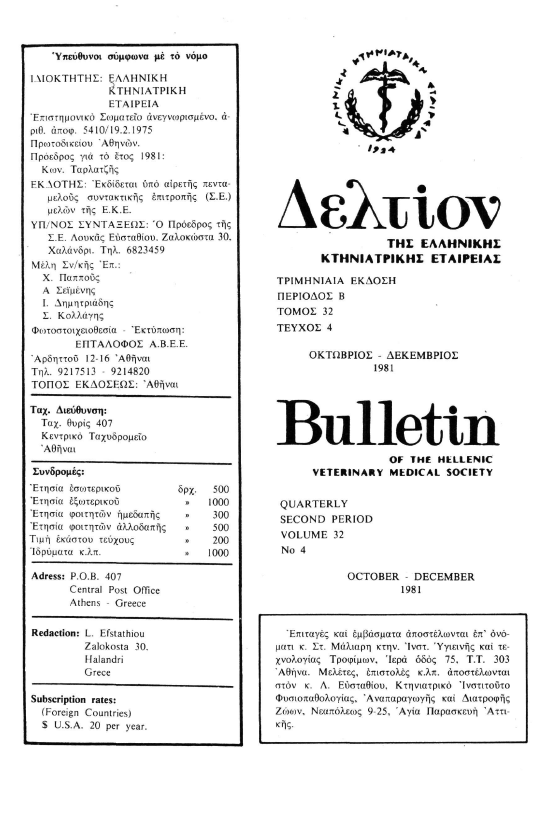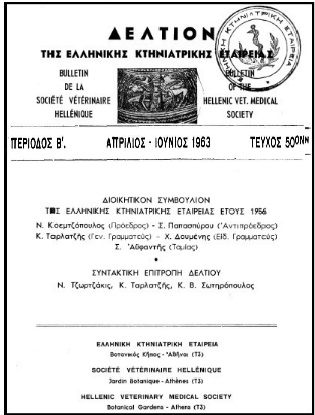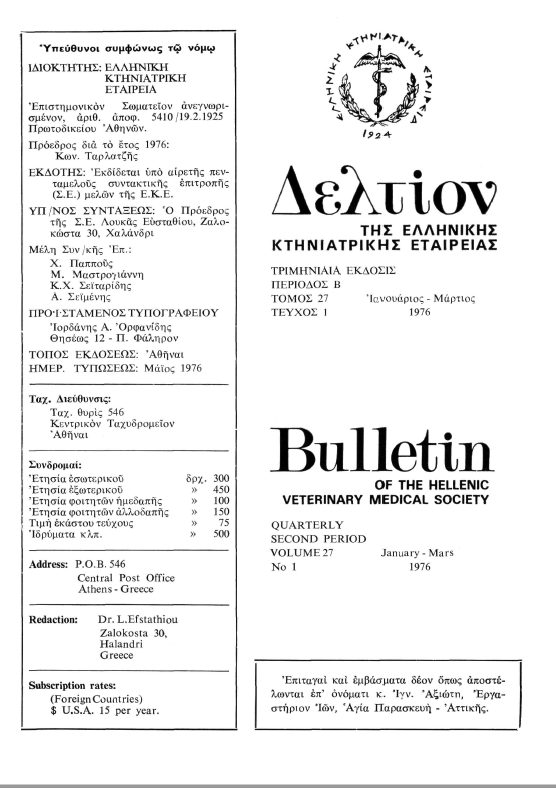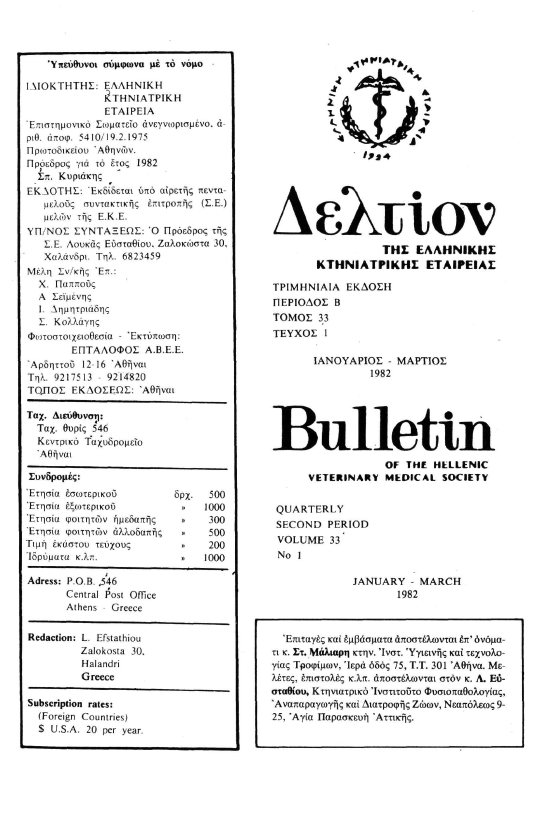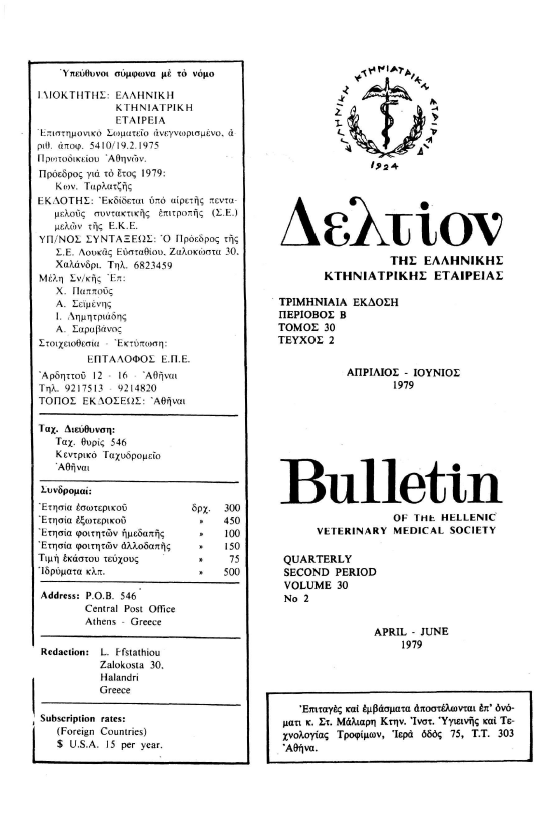Results of oestrus synchronization in sheep with subcutaneous implants and intravaginal sponges in three different seasons of the year
Abstract
A total of 4694 ewes from 50 flocks were synchronized for oestrus In the prefecture of Piena during 1978. Of these animals, 1618 were synchronized during anoestrus (March-April), 2458 during the transistory period (May-June) and 618 during the breeding -season (July-September). Synchronization was carried out by means of intravaginal sponges (Veramix Upjohn), containing 50 mg of the progestagen MAP and subcutaneous implants (Silestrus Abbot) containing 375 mg progesterone. After withdrawal of the sponges and Implants 14 days later, all animals were injected with 500 Lu. P.M.S. All ewes sere bred naturally. The mean percentage of ewes exhibiting oestrus amounted to 96.66% and fluctuated only slightly between the sponges and implants and among the three breeding seasons. The percentages of conceptions and lambings at the 1s t and at the 1s t and 2 synchronized oestrus showed a progressive improvement from the anoestrus period (56.8%, 51.6% and 73.4%, 66.5%, respectively) to the transistory period (61.9%, 58.4% and 82.2%, 77.3%, respectively) and reached their optimum at the breeding season 70.3%, 66.7% and 86.8%, 82.5%, respectively. Irrespective of the season, the percentage of conceptions and lambings achieved with the implants both at the 1* (57.2%, 52.1%, respectively) and at the la and 2 n d synchronized oestrus (77.7%, 71.2%, respectively) were significantly lower (P<0.01) than those achieved with the sponges (68.0%, 65.6% and 83.3%, 79.3%, respectively), owing to the high percentage of suppurations observed at the site of implant insertion during the transitory period. Because of these suppurations the percentage of conceptions and parturitions achieved with the implants did not show any progressive improvement from the anestrous period (55.8%, 48.7% and 74.0%, 66.0%, respectively) to the transitory period (55.8%, 51.7%, and 78.9%, 73.3%, respectively). Conversely, the percentages of conceptions and lambings achieved with the intravaginal sponges showed a progressive improvement from the anoestrous period (59.3%, 59.1% and 71.9%, 67.6%, respectively) to the transitory period (77.2%, 68.6% and 87.2%, 83.3%, respectively) and were optimum during the breeding season.
Article Details
- How to Cite
-
ΤΣΑΚΑΛΩΦ Π., ΤΡΙΚΑΣ Μ., ΠΑΡΛΙΤΣΗΣ Ι., & ΚΑΡΑΓΙΑΝΝΙΔΗΣ Α. (2019). Results of oestrus synchronization in sheep with subcutaneous implants and intravaginal sponges in three different seasons of the year. Journal of the Hellenic Veterinary Medical Society, 32(4), 330–340. https://doi.org/10.12681/jhvms.21513
- Issue
- Vol. 32 No. 4 (1981)
- Section
- Articles

This work is licensed under a Creative Commons Attribution-NonCommercial 4.0 International License.
Authors who publish with this journal agree to the following terms:
· Authors retain copyright and grant the journal right of first publication with the work simultaneously licensed under a Creative Commons Attribution Non-Commercial License that allows others to share the work with an acknowledgement of the work's authorship and initial publication in this journal.
· Authors are able to enter into separate, additional contractual arrangements for the non-exclusive distribution of the journal's published version of the work (e.g. post it to an institutional repository or publish it in a book), with an acknowledgement of its initial publication in this journal.
· Authors are permitted and encouraged to post their work online (preferably in institutional repositories or on their website) prior to and during the submission process, as it can lead to productive exchanges, as well as earlier and greater citation of published work.

